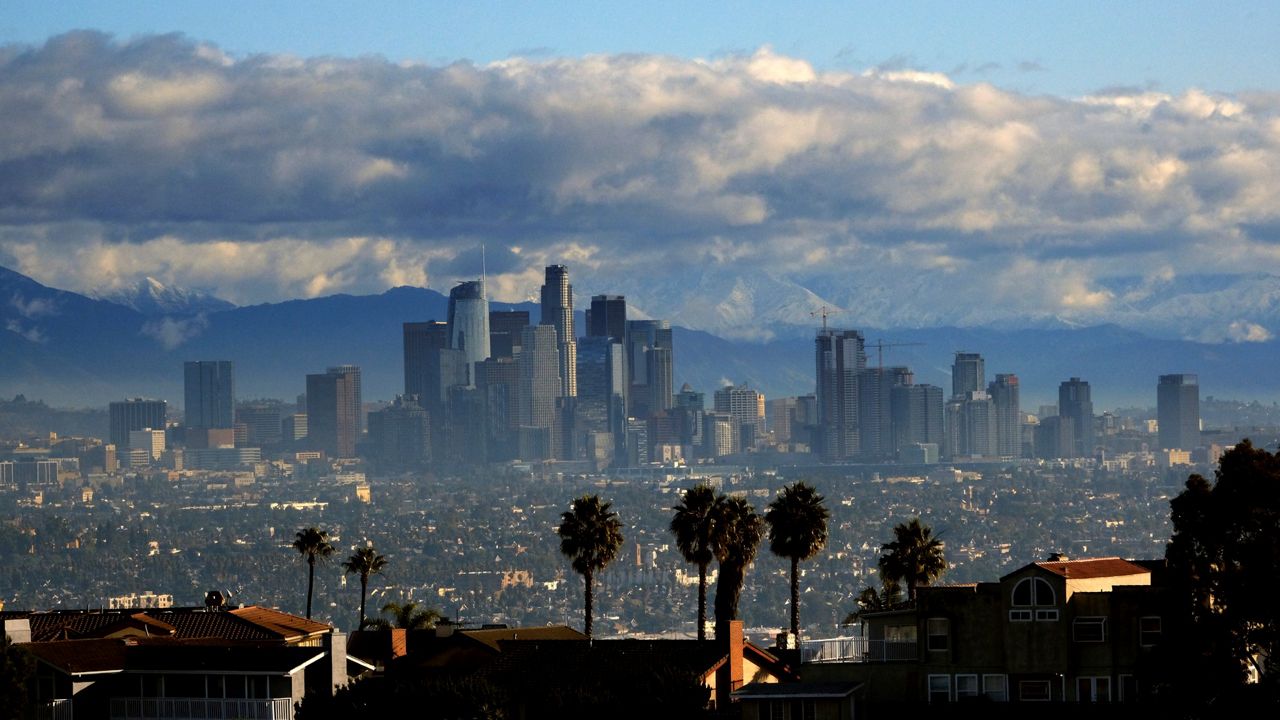"What goes up must come down" is not always the case in weather, but there are winds that go up one side of a mountain chain and come down the other side of the mountain chain.
When winds go up the front side of a mountain, or windward side, they are called upslope winds. When winds go down the backside, or leeward side, they are called downslope winds.
First, let's talk about upslope winds. One synonym for upslope winds is "anabatic," which stems from the Greek word "anabatos." That means "moving upward." Convective winds are also winds that move upward.
Winds can be forced upward by different ways. Winds can be forced upward by mountain chains. Another name for this kind of wind is orographic lift. Literally, the wind is forced upward as it runs into mountains. This kind of upslope wind produces more rain on the windward side of a mountain chain.
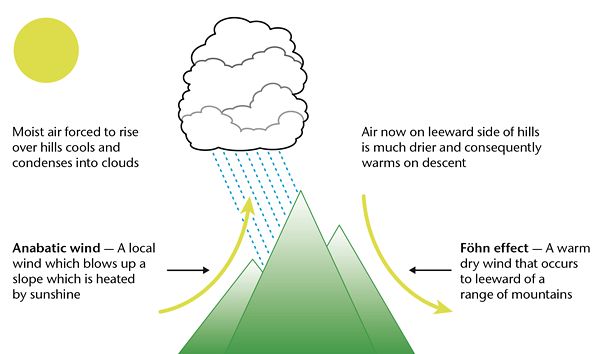
Along a cold front, you can get winds forced upward as a cold front plows into warmer air and the warm air rises. This is also called convective lift. When moisture is present, clouds such as cumulonimbus–thunderstorm clouds–form. That type of wind happens at the regional scale.
Another large-scale area of rising air happens with low pressure systems. With low pressure systems, you tend to get rising air with clouds and possibly rain.
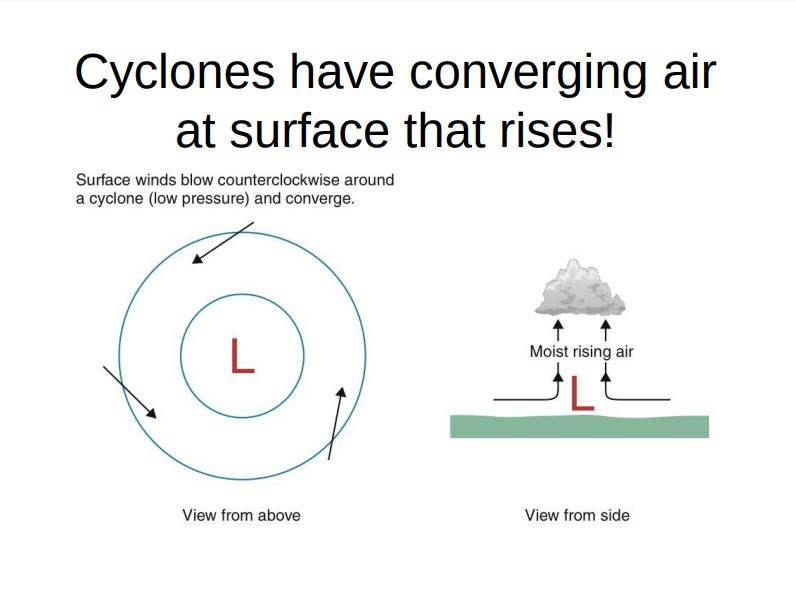
On the opposite end at the micro-level, you can get winds to be forced upward because of small-scale temperature differences. In the mountains, mountainsides and valleys heat up to different temperatures. The temperature differences cause pressure differences, which create thermal winds. Paragliders can ride these thermals by jumping off steep cliffs and letting their sails or wings fill with fast-rising bubbles of air.
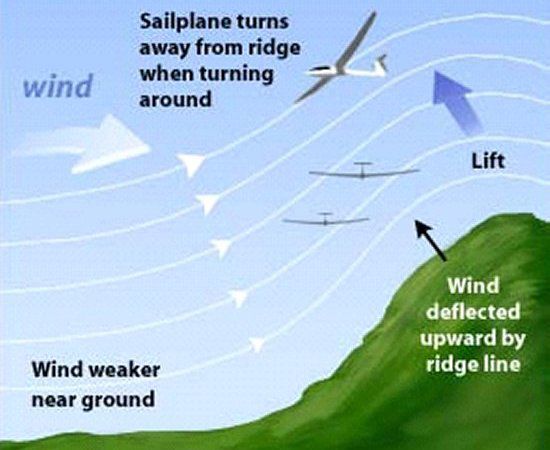
Now let's talk about downslope winds, or sinking air. These types of winds are called katabatic winds. The word "katabatic" comes from the Greek word "katabasis," meaning "descending." As winds flow down the leeward side of a mountain chain, they compress, warm and dry.
That is why there are so many deserts on the leeward side of a mountain chain. The downslope effect of winds creates a "rain shadow."
Under areas of high pressure, you tend to get sinking air. The sinking air leads to more sunshine as sinking air compresses and dries the air, which leads to fewer clouds. Under high pressure, you can get stagnant air with poor air quality as particulate matter and pollution is pushed toward the ground.
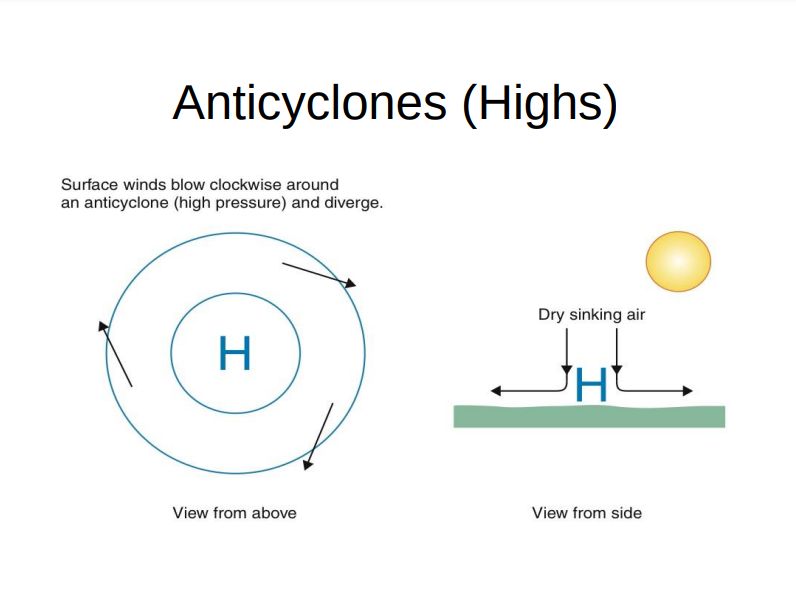
On the small scale, diurnal wind patterns can create downslope winds. This is how the wind changes during the day and night. At nighttime, winds go downhill along mountain slopes. Colder air near the top of mountain slopes is heavier than the surrounding air. Gravity moves the parcels of air toward the valley floor.
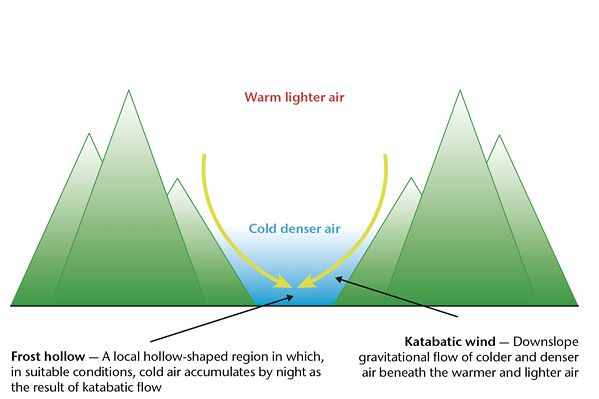
So there you have it: the ups and downs of winds.



